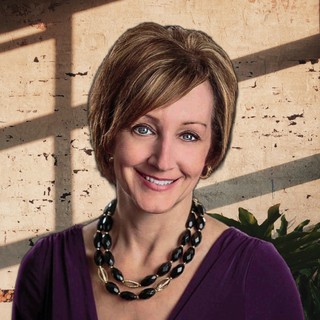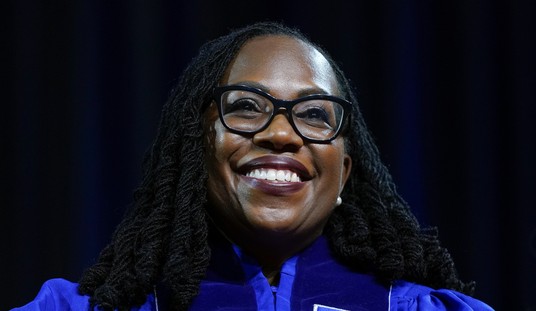The Centers for Disease Control and Prevention (CDC) has issued new safety guidelines to prevent the spread of COVID-19 in the event schools reopen in the fall. The recommendations—they’re just that… for now—have teachers and parents alike wondering how such restrictions could be implemented and asking who came up with such unworkable plans. Here’s a brief summary of the suggested rules:
-
- Wear masks if over the age of two
- Discourage sharing of items or supplies that can’t be easily cleaned between uses
- Clean and disinfect frequently touched surfaces between uses
- Develop a schedule for increased, routine cleaning and disinfection
- All belongings separated into individual cubbies or labeled containers
- Avoid sharing electronic devices, toys, games, or learning aids
- Desks should be 6-feet apart and all facing the same direction
- One child per seat on school buses and skip rows between riders
- Install sneeze guards or partitions where 6-feet-apart won’t work
- One-way routes in hallways
- Tape on sidewalks and walls to ensure kids stay 6 feet apart
- Close shared spaces like cafeterias and playgrounds
- Physical barriers or screens between sinks in bathrooms
- Children either bring their own meals or serve individually plated meals in the classroom
- Kids eat lunch in classrooms
- Virtual events in lieu of field trips
- The same children stay with the same staff all-day
- Avoid switching groups or teachers
- Stagger student arrival and departure times to limit crowds of kids
- Limit non-essential volunteers and visitors
- If possible, daily health and temperature checks
When I posted a question about this on Facebook, teachers were quick to weigh in, saying they thought the recommendations would be difficult if not impossible to implement (many of their comments are included here).
If followed to the letter, the CDC recommendations will be a nightmare for teachers and staff to implement and enforce, and will no doubt add to the stress and frustration they’re feeling after having their students ripped away from them mid-year. And while the CDC guidelines are just recommendations at this point, it’s likely that some school districts, and maybe even some government and local officials, will insist on implementing them.
My colleague Stacey Lennox, a registered nurse, pointed out that the CDC does not even seem to be following its own recommendations:
More of the CDC reopening schools guidelines seem to go directly at surface transmission of the coronavirus. Eliminating communal spaces, the prohibition of shared objects, and eliminating the use of playground equipment are on the list.
The CDC’s own research concluded that surface transmission is highly unlikely because transmission seems to be a product of the amount of viral exposure and the length of time. Surfaces are unlikely to house the number of virus particles required to transmit an infection and the individual is not in contact with them long enough.
This does not mean that increased sanitation of surfaces should not be in order. This is contained within the CDC guidelines for reopening schools and it is appropriate. But the idea that a child is likely to catch COVID-19 from a trip across the monkey bars or a zip down a slide seems laughable.
This equipment is also outside in the sun. DHS research has found that the sun reduces the half-life of the virus to a minute or two and this effect is enhanced by heat above 70 degrees. It almost seems like the school playground would be a very safe place for children to be. And recess or free time increases learning and overall health and decreases behavior problems.
The guidelines for reopening schools also have children marching down one-way corridors and encouraged to wear masks. If the goal is to make children into little reservoirs of anxiety who think the world at large is a terribly dangerous place, let’s do that. Because the climate cabal hasn’t gone far enough toward creating little balls of neuroses. How about no.
Feminist Theorist Wants to Use COVID-19 Crisis to ‘Abolish the Family’
My daughter-in-law, Allyson Bolyard, a first-grade teacher at a private Christian school, first alerted me to the CDC document and warned that we’ll see teachers quit en masse if they’re forced to follow the proposed classroom rules. She is, understandably, a little salty about the recommendations and shared what she’d tell the CDC if they were to consult her. Her words are in italics.
Wear masks if over the age of two
Have you ever met a child? I can barely go to a store without my ears being in pain, my face getting sweaty, and my anxiety going through the roof due to wearing a mask. Imagine a child doing that. They will stay on for three minutes and I will say, “keep your mask on” 30,000 times a day. When my kids come to school for picture day, we purposely take their pictures first thing in the morning because they become completely disheveled by 10 a.m.
Discourage sharing of items or supplies that can’t be easily cleaned between uses
Have you ever been to a school that’s underfunded? Chances are you have because every school is underfunded. As teachers, we thrive because students are able to share supplies, manipulatives, materials, and books. What about my reading curriculum that only supplies six books per title? Will my classroom library become irrelevant? There is something to be said about reading from a real book, ESPECIALLY with children who are learning to read.
Develop a schedule for increased routine cleaning and disinfection
Teachers already do not have enough time during the school day to teach, and now you want us to create a routine to disinfect? Are you going to pay for our schools to hire more janitorial staff? Hire more night-time cleaners? Where will we be getting the disinfecting supplies? Are you expecting students to be handling chemicals to disinfect their supplies? With such strict guidelines, it sounds like I shouldn’t be near my students, let alone touching anything that is theirs.
Desks should be all 6 feet apart and facing the same direction
Unfortunately, we do not teach in the gym or auditorium. Also, asking a child to sit in his or her desk all day is not feasible.
One child per seat on buses and skip seats between riders
With an average of about 30 seats per bus, that puts it at 15 riders per bus, where before, buses were able to seat 50+ riders. Where will the funding come from to purchase more buses and hire more bus drivers? Will there be a lottery to determine which parents will have to drive their kids and who will get to ride the bus?
Tape on sidewalks to ensure kids stay 6 feet apart
This will not work for kids of any age. Teenagers will be socializing, middle-schoolers will be traveling in packs like they always do, and elementary school-age kids will be hugging, hanging on each other, and talking in close proximity. This would take constant supervision by a teacher or other staff member during every moment of the school day. Who will pay that person’s salary and the bills for my therapy sessions from saying “Stand on your spot, 6 feet apart” 30,000 times per day?
No shared spaces, including cafeterias and playgrounds
Have you seen a school-age child go the entire day without recess? Let’s not forget to mention the devastating toll that decreased social interaction will have on these kids. In 15 years, you will see a TON of adults who do not know how to act in society. Children learn a lot from playing with their peers on the playground.
Kids eat lunch in classrooms
So who is supervising their lunch, me? Lunch is time for me to reset and get ready for the second half of the day. Are we going to make them shovel the food into their mouths so they have the least amount of time without their masks on? Kids learn manners and social cues from the lunchroom. They need time to be kids and socialize with each other. Also, that’ll take a can of Clorox wipes to clean up after.
Same children with the same staff all day, no switching groups or teachers
In order to teach effectively, I need to plan my instruction. Teachers do not just open a book and read from it. We think of creative ways to teach, prepare materials, research teaching strategies, etc. These things take time. When my students go to “specials” with another teacher (art, music, gym) I get 45 minutes to plan my instruction for the future. When will I do that now? After school? At home? Who is going to pay me extra to stay after school longer or take time from my family at home? Also, the CDC expects me to teach music, art, and gym? Where will I get those materials? Will the CDC provide art materials for each child? Also, teachers who went to school to teach only science are now expected to teach high school science, math, and literacy? What if a child is gifted in math but not in reading? That kind of differentiation requires two teachers. I know the suggestion will be to video them into the room, so why not just teach from home?
If possible, daily health and temperature checks
This is probably the most important and EASIEST item on the list and we are told to do it “if possible.”
Harvard Law Prof Calls for Ban on Homeschooling, Saying It’s ‘Dangerous’ to Leave Children with Their Parents 24/7
Schools will feel like prisons
“I fear that the leaders of this country and members of the CDC are not realizing that they are going to cause a major shift in our education system,” Bolyard said. “They are going to see a ton of teachers quitting to stay home or find another career. This is not what we signed up for. The mental and emotional exhaustion these new changes bring will cause a high rate of teacher burnout.”
Mary Jane Olsen, a retired kindergarten teacher, pointed out that these recommendations will play out differently for the younger grades than they do for middle school and high school. She’s concerned that the guidelines would eliminate some of the more intangible teaching skills, things that are essential to a successful classroom.
“I am such a hugger in the classroom,” Olsen said. “My kids thrived on it. And I am a face-watcher. That’s how I read my kids. Yes, eyes tell a story but I read my kids’ faces all day long. That’s how I know where they are at.”
While Olsen said she understands the need for masks, she wonders how that will work with younger children. “Have you ever seen what a kindergarten kid with glasses looks like by lunch?” she asks. “Those glasses have been everywhere and they have so many fingerprints. What will they do with a mask all day and how sanitary will they be by the end of the day?”
She said she’d be willing to jump through just about any hoops to get kids back in the classroom, especially those who have difficult home lives. “So many are withering on the vine,” she said. “I think of kids in abusive homes and I could cry.”
Denise Likar, a fourth-grade teacher at a private Catholic school, said, “It’s sad that the lunchroom and recess are not possible … kids need this socialization.” She added that “staying with the same staff all day is going to be difficult for intermediate and jr. high — some teachers at the higher levels aren’t trained to teach all subjects. I totally understand the purpose for all these guidelines, but don’t see how this can work.”
Caroll Aleshire, an intervention specialist, said, “The state just took nearly $400,000 from our budget for this year, and we will lose income tax (yes, we are supported by income tax), and now we need probably three times the number of bus routes, and 1/3 the number of kids in a room,” she said.
“How is a teacher supposed to help students from six feet away?” Aleshire asked. “In addition, as an intervention specialist who is supposed to pull kids for small group work, how do I gather 4-5 kids from 2-3 different rooms, take them to my room, and get them back afterward—on repeat all day? And, do you really think we can keep our kindergarten kids from getting near each other, or from taking off their masks? So, each child has a desk, and must stay seated, or standing by the desk all day? No recess? No gym class or music? What a BORING day!”
My son, Ryan Bolyard, asked, “Where else in the world are you not allowed to sit next to people in the cafeteria, can’t talk to people on the bus, get shuffled from place to place by people monitoring to ensure you are not touching each other, and sent outside to a fenced-in area to get exercise?
Miriam Cannon, the mother of three teenagers, answered that question, saying the guidelines will make the classroom feel “more like prison than school.”
“They better plan on providing mental health services to all these kids,” she warned. “I have three teenagers, and their entire world is based on socialization, activity, interaction, sports, and social contact. The detriment we are creating from wrecking their entire world far exceeds any risk of illness.”
Let’s hope local school districts and our governing authorities are smart enough not to turn our classrooms into prisons. If that happens, we’ll have to start calling our children inmates instead of students.
Follow me on Twitter @pbolyard
Editor’s Note: Want to support PJ Media so we can keep telling the truth about China and the virus they unleashed on the world? Join PJ Media VIP and use the promo code WUHAN to get 25% off your VIP membership.










Join the conversation as a VIP Member